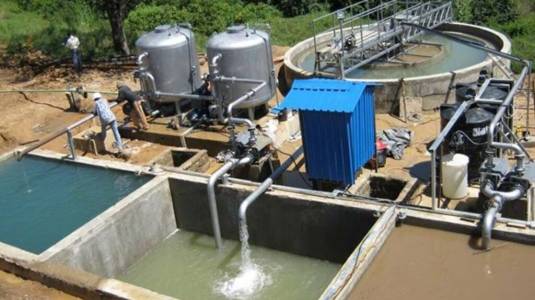Description
Reverse Osmosis (RO) Water Filtration Systems: Pure Water for a Healthier Life
Reverse Osmosis (RO) is the gold standard in water purification, delivering exceptionally clean and pure water for drinking, cooking, and more. Unlike simpler filtration methods, RO systems employ a semipermeable membrane to remove a significantly wider range of contaminants, resulting in superior water quality.
What is Reverse Osmosis?
Reverse Osmosis works by forcing water under pressure through a specialized membrane. This membrane acts as a barrier, effectively rejecting dissolved solids, impurities, and contaminants. The process removes up to 98% of dissolved solids, including:
- Sediments: Sand, silt, rust, and other particulate matter.
- Chlorine and Chloramines: These disinfectants, while beneficial for water treatment, can impart unpleasant tastes and odors and potentially react with other substances to form harmful byproducts.
- Heavy Metals: Lead, mercury, arsenic, and other toxic heavy metals.
- Pesticides and Herbicides: These harmful chemicals can leach into water sources from agricultural runoff.
- Dissolved Salts and Minerals: Excess minerals can contribute to hard water, leaving unsightly deposits and impacting the taste and quality of your water.
- Bacteria and Viruses: While not always guaranteed depending on pre-filtration, RO systems significantly reduce the risk of bacterial and viral contamination.
Benefits of Using a Reverse Osmosis System:
- Improved Taste and Odor: Enjoy fresher, cleaner-tasting water free from unpleasant tastes and odors.
- Enhanced Health: Reduce your exposure to harmful contaminants and improve your overall health and well-being.
- Protection for Appliances: Hard water can damage appliances and plumbing. RO systems reduce mineral content, protecting your investment.
- Versatile Applications: Use purified water for drinking, cooking, brewing coffee or tea, filling humidifiers, and more.
- Cost-Effective: While the initial investment may be higher than other filtration methods, the long-term cost savings from reduced bottled water consumption and appliance maintenance can be significant.
Types of Reverse Osmosis Systems:
RO systems are available in various configurations to suit different needs and budgets, including:
- Under-Sink Systems: Compact and discreet, these systems are installed under your kitchen sink, minimizing space requirements.
- Countertop Systems: Easy to install and portable, these systems offer a convenient solution for smaller spaces or temporary use.
- Whole-House Systems: These larger systems filter all the water entering your home, providing purified water for every faucet.
Choosing the Right RO System:
Selecting the appropriate RO system depends on factors such as:
- Water quality: Test your water to determine the level of contaminants present.
- Household size: Consider the daily water consumption of your household.
- Budget: RO systems range in price depending on features and capacity.
- Installation requirements: Assess the space available for installation and your DIY capabilities.
Maintenance and Replacement:
Regular maintenance, including replacing filter cartridges according to the manufacturer's recommendations, is crucial to ensuring optimal performance and water quality. The frequency of filter changes depends on water quality and usage.
Conclusion:
Investing in a Reverse Osmosis system is an investment in your health and well-being. By providing access to consistently pure and delicious water, RO systems offer a superior water filtration solution for discerning consumers. Contact us today to learn more about our range of high-quality RO systems and find the perfect solution for your home.
